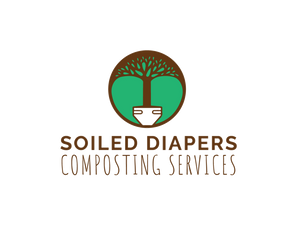In 2020 an archeological find in Egypt was unveiled in Saqqara. This site is one of the largest finds the country’s ministry of antiquities has announced. Treasures that they revealed include hundreds of intact coffins complete with well preserved mummies inside, some of them dating back over 2000 years. Other items they have found have been dated at over 4500 years!
These tombs are beautiful! It made me think of why, today, people spend copious amounts of money on coffins to bury their loved ones. It’s not something I’ve ever understood. I have often proclaimed that I just want to be buried in a pine box; spend the money the coffin would have cost on something more applicable to the living rather than the dead. After learning about Saqqara, I may be persuaded to have something a little more handsome than an old western-style box. What if someone digs me up in 4500 years? Mama always taught me to dress my best when meeting new people.
Saqqara also gave me food for thought when I considered that more than just coffins were discovered. Many artifacts, tools, weapons, art, statues, and more have been uncovered in pristine condition. I started thinking that it’s a shame that we no longer honor our dead they way the ancients used to. No matter the expense of the coffin we use for our loved ones, it’s still just a coffin. We don’t send them off with all their precious art, hand-crafted items, or money. We keep that for ourselves. This led me to a startling discovery: we are now a culture of diggers, not buriers. We excavate precious metals, fossil fuels, renewable and non-renewable resources, historical sites, and more. Actually, I can only think of two things we bury – people in expensive silken coffins…and our garbage in a landfill! That doesn’t seem like the greatest honor we could be giving to someone we’ve loved all our lives.
Over the past 5 years I’ve become quite interested in waste and have learned a fair amount. Although I would never claim to be an expert at garbology (yes, that is a word, look it up), I do know a thing or two about garbage, compost, and all that we tend to throw away and forget about. One of my favorite articles is about a garbologist, William Rathje (rath-jee), who had been studying garbage for over 40 years at the time the article was printed. The article is from 1992 and is quite interesting to read (Note 1) (Grimes, William) He mentions some of the items that he has found in his career, including a 40-year-old hot dog and 25-year-old head of lettuce, both in pristine condition. The most shocking discovery of his was an order of guacamole (not even packaged, but ordered!) that looked good enough to eat next to a newspaper article that he could still read – from 1967!
Ok, yes, it has been nearly 30 years since then, so how about something a little more recent. Jose Ysea, a city spokesman for the city of San Diego, researched “time capsules” of truth about humans’ waste at the old Chollas landfill. What he found were 40 year old newspapers, cereal boxes, clothing, and much more. (Landfill wells reveal preserved trash) Although dirty, most things he found were perfectly preserved. You can take a look at the news clip in the reference list below.
One of the first things that I learned when I discovered how many diapers were going to the landfill was that they are the 3rd largest consumer item headed to the landfill. (Ajmeri) The top one and two items on that list are common to both the previous discoveries: food and beverage containers are number two, and newspapers (paper products) are number one. (EPA) Not much has changed from 1992 through to 2016, and up to the present, except for the volumes of waste those items represent. And that is a lot!
In Canada, on average we generate 720 Kg of waste per person annually. (Statistics Canada) Albertans are particularly bad compared to the national average as we produce over 1000 Kg per person! Take a look at the graph below to see how other provinces compare:

Now, we have come a long way since 1992 - even in the past 5 years - when it comes to waste reduction. Many fast-food companies have switched to compostable take-out containers including clamshells, straws, cups, even lids. More people have switched to reusable drinking containers, and are buying organic from the supermarket, which often avoids single use plastic packaging. Most people don’t subscribe to printed news but prefer the online versions they can receive directly to their mobile devices or computers. However, diapers remain an ever-growing concern.
The global diaper market has increased from $51.68 Billion in 2019 to $69.5 Billion USD in 2020. That is an increase of nearly $20 Billion in just one year, or 25% market share. (Research and Markets) Although technology is allowing for diapers to become smaller, the volume of diapers we send to landfills is increasing at an alarming rate.
Once again, progress has been made in many areas through the use of biodegradable and compostable diaper options. However, all of these options require industrial equipment to break them down. Just throwing them in your trash collection bin won’t allow for these diapers to degrade. In another 40-50 years experts will still be digging them out of the landfills they are testing – if we still have space for landfills by then.
The fact of the matter is we bury more waste than anything else, and most of it doesn’t need to be piled under heaps of other trash. Diapers make up a large part of waste that can be diverted. Think about what future garbologists will think they are learning about our culture 4500 years from now, like we think we are learning about Ancient Egyptians: that the most import thing to us must have been family and trash since that is what we entombed most efficiently. Perhaps they will think that we were a civilization that worshipped trash.
If you think that is as crazy as I do, then it’s up to you to do something about it. I have. I can compost the diapers you, or someone you know, is using, and we’d love to come collect them from you. But, really, all you need to do is make sure someone else knows that it can be done. If you want to step up your game, and make sure that a lot of people know it can be done, approach your local leaders via email, social media, or phone. Heck, do it the old-fashioned way and send them a letter expressing how you think local leaders should adopt programs like this to help divert waste. It’s an easy way to ensure that our future is a little brighter, and less full of garbage. Just be sure that the letter you write is a good one. After it is read, chances are it will be headed to a landfill, and someone in 50, or 500 years, may decide to read it!
1 A version of this article appears in print on Aug. 13, 1992, Section B, Page 1 of the National edition with the headline: Seeking the Truth in Refuse. See references for a link.
REFERENCES
Ajmeri, J.R., and C.J. Ajmeri. “Developments in the Use of Nonwovens for Disposable Hygiene Products.” Advances in Technical Nonwovens, 2016, ch. 18.2.1, pp. 473–496., doi:10.1016/b978-0-08-100575-0.00018-8.
EPA. (2018) United States Environmental Protection Agency: Facts and Figures about Materials, Waste and Recycling. Retrieved from https://www.epa.gov/facts-and-figures-about-materials-waste-and-recycling/national-overview-facts-and-figures-materials on 02 June, 2021
Grimes, William. “Seeking the Truth in Refuse.” The New York Times, August 13, 1992, Section B, P.1. Retrieve from https://www.nytimes.com/1992/08/13/nyregion/seeking-the-truth-in-refuse.html on 02 June, 2021.
“Landfill wells reveal preserved trash.” The Now@10, KGTV News, ABC, 21 June, 2016. Retrieved from https://www.youtube.com/watch?v=Ulkbdmul5is on 02 June, 2021.
Research and Markets. Diaper Market: Global Industry Trends, Share, Size, Growth Opportunity and Forecast 2021-2026. April 2021. Retrieved from https://www.researchandmarkets.com/reports/5311866/diaper-market-global-industry-trends-share?utm_source=GNOM&utm_medium=PressRelease&utm_code=df3rxw&utm_campaign=1525280+-+Global+Diaper+Market+(2021+to+2026)+-+Industry+Trends%2c+Share%2c+Size%2c+Growth%2c+Opportunity+and+Forecasts&utm_exec=jamu273prd on 02 June, 2021.
Statistics Canada. (2012) The Conference Board of Canada: Waste Generation: Provincial and territorial ranking. Retrieved from https://www.conferenceboard.ca/hcp/provincial/environment/waste.aspx#:~:text=On%20average%2C%20Canada%20generates%20720%20kg%20of%20waste%20per%20capita. On 02 June, 2021.






